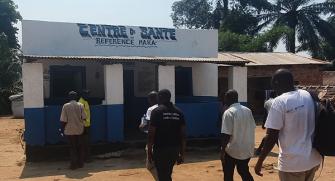Impact evaluations of mass oral cholera vaccination campaigns
Cholera remains a global health threat, persisting in settings with inadequate water, sanitation and hygiene (WASH) access. Killed oral cholera vaccines (OCV), in combination with WASH improvements, have become a standard component in cholera control programs. Most available evidence on OCV impact has been related to individual-level protection from clinical disease. Mass vaccination campaigns have the potential to also reduce transmission and occurrence of pandemic Vibrio cholerae in the environment. In 2020, mass OCV campaigns were deployed in cholera endemic regions of the Democratic Republic of the Congo. We are starting a 2-year study to evaluate the impacts of mass OCV roll-out in Goma and rural area of Ex-Katanga.
Methods
Our protocols combine (1) clinical surveillance, (2) serological surveys, and (3) household follow-ups. We will collaborate with health authorities to strengthen clinical surveillance systems. Culture of V. cholerae, molecular assays and cholera serology will be conducted in North Kivu (including optimisation of a qPCR assay for the simultaneous detection and differentiation of toxigenic V. cholerae O1 and O139). A sequence of serological surveys will be conducted at each study sites to assess cholera infection rates in the community, providing a measure of transmission independent of infection severity and health-seeking behaviour. Finally, a series of follow-up visits to the households of confirmed cholera cases will be conducted estimate household secondary attack rates and cholera shedding time among vaccinated and non-vaccinated persons. Environmental samples will be collected from households and water sources to monitor changes in V. cholerae detection frequency. Clinical, household, and environmental isolates will be sequenced to better understand V. cholerae circulation within households and study sites.
Objective
The study is expected to generate evidence on the long-term epidemiological and environmental impacts of mass OCV administration. The combination of clinical surveillance, serological surveys, and household contacts and environmental sampling will also contribute to improving our understanding of cholera transmission dynamics in endemic settings characteristic of transmission hotspots and inform articulated WASH-OCV strategies.
Country
Democratic Republic of the Congo
Tentative end date
2024
Our role
Sponsor of the study. Conception, implementation, analysis, publications
Partners
Ministry of Health DRC, PNECHOL, INRB, MSF OCP
This study is funded by the Wellcome Trust, UKaid and the Foreign and Commonwealth and Development Office (FCDO).
Preliminary Results
Preliminary clinical surveillance and vaccination coverage results are presented, as data collection is still ongoing
Results
In Goma, vaccine coverage two years after last vaccination is lower than expected at 49.5% in the targeted zones. Over 8000 suspect cases were included in clinical surveillance in Goma, with cases reported across most of the city. In Bukama, high levels of vaccination coverage were reported through a community approach survey, with most areas reporting 80 to 90% coverage. Close to 1000 cases were reported, and while an epidemic was ongoing at the time of vaccination, notification levels have remained low and stable ever since. In Goma, drinking surface or tank-delivered water appeared to be a risk factor for cholera infection, while in Bukama, the associated risk was the public distribution system.
Conclusion
The study sites present different pictures in terms of their OCV campaigns as well as their cholera surveillance profile and transmission. Preliminary results offer elements to guide the implementation of vaccination campaigns. In Goma, for instance, patchy vaccination targets and population movements may have diluted coverage. Early findings illustrate risk factors for cholera transmission, providing operational insights to enhance control strategies. Future results will incorporate other types of data and help design efficient vaccination strategies.
Preliminary findings of a novel community-based mixed-methods approach to assess oral cholera vaccination coverage in a rural area of Democratic Republic of Congo (DRC)
Thirteen (164 villages) out of the total 19 health areas of the Bukama health zone were vaccinated against cholera in December 2021 and March 2022. Bukama health zone is mostly rural and includes two urban agglomerations plus many smaller villages accessible only by motorcycle or boat. The traditional WHO Extended Programme for Immunisation (EPI) vaccination coverage survey (VCS) methodology requires sending teams from a central location to randomly selected points, requiring extensive transportation logistics. While this methodology provides coverage results on the total study zone it does not identify villages with high and low coverage. Epicentre sought to develop and pilot a novel vaccination coverage survey methodology that would be less resource intensive and provide coverage data for every village.









